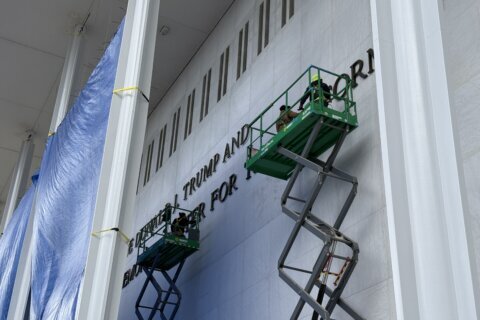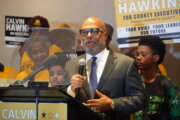If offices in downtown D.C. remain empty and current leasing trends continue, the city could lose millions from commercial property tax revenue, according to a new analysis from the D.C. Policy Center.
Demand for office space downtown has dwindled, according to D.C. Policy Center executive director Yesim Sayin, because companies are either not renting spaces or renting less of it. The implications of that, she said, are starting to become clearer, years after the pandemic started.
“Companies are no longer leasing, and that means your real estate is no longer desirable, and that means we really do not know what those buildings are worth anymore,” Sayin said. “We also haven’t seen any sales. You really never know the true value of a property until you sell it.”
If vacancy rates reach availability rates, the analysis found, the city could lose over $100 million in tax revenue. While that may not seem like a large amount when compared to overall tax revenue, “it’s not nothing, especially in years like this where every other tax base is suffering and the city is really in need of money,” Sayin said.
“If the vacancy doesn’t improve, and the market risks continue to be as high as they are, which we think will happen, the city stands to lose at least $150 million, if not more, from commercial property tax revenue,” Sayin said.
The implications of that are significant, Sayin said, because it may leave the city with less funding for schools, transportation or parks, among other things.
“This is a city that relies on a lot of government services,” Sayin said. “We have public transportation that takes government money, we have public schools that take government money, we have public parks on which we spent government money. … The less money the city has from tax revenue, the more difficult it will become for the city to provide the services, so everybody stands to lose.”
While D.C. is not alone in having empty offices in downtown districts, Sayin said there currently aren’t any positive trends in the market, which she expects to remain true for a while.
“We’re going to have to do something else with these buildings,” Sayin said. “Maybe we’ll convert some of them into housing, maybe some of them will become different types of offices, or maybe some of them will be taken down and turned into green space or public space. We have to go through that transition. Unfortunately, there’s very little interest from the capital markets in investing in D.C.”
Some parts of the city are faring better than others, Sayin said.
The analysis found that commercial office buildings lost more value in neighborhoods where there isn’t a mix between commercial and office buildings. Neighborhoods such as NoMa and Navy Yard have fared better than others, she said.
The pandemic played a significant role in changing how office spaces are used, according to Sayin.
“The pandemic took a trend that would have taken 25 years to take hold, and turned it into a three-month period.”








